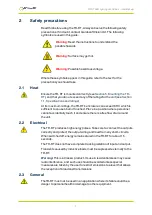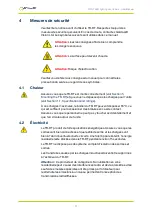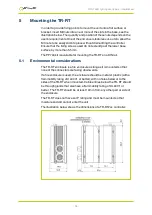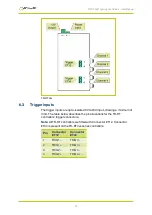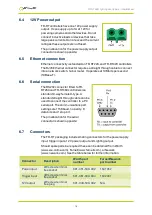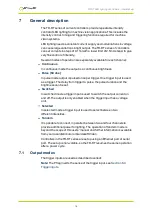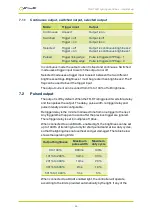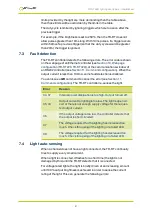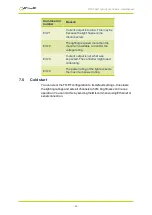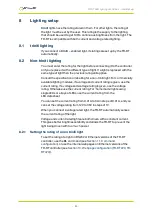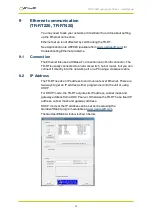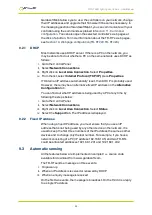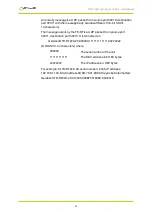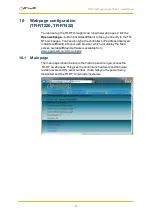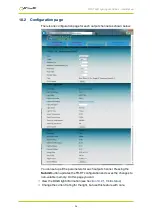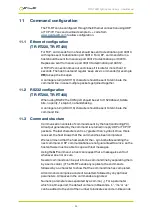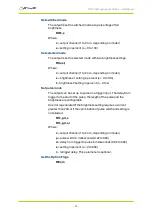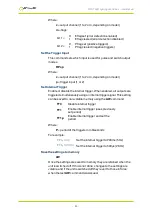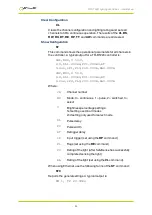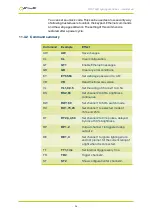
TR-RT LED lighting controllers - User Manual
limits provided by the light are more demanding than the table above,
then those limits will be overridden by the limits in the table.
The duty cycle is limited by ignoring triggers which are too soon after the
previous trigger.
For example, if the brightness is set to 250%, then the TR-RT does not
allow pulses greater than 10ms long. With 10ms pulses, if a trigger occurs
within 50ms of a previous trigger (so that the duty cycle would be greater
than 20%) the trigger is ignored.
7.3
Fault detection
The TR-RT controller detects the following errors. The error code is shown
on the webpage of an Ethernet controller (see
configuration (TR-RT220, TR-RT420)
),or the communications window of
an RS232 controller (see
Section 11, Command configuration
). When the
output current is less than 100mA, some fault detection is disabled.
You can issue a
GR
command to cancel the error (see
). The TR-RT controller re-senses the light.
Error
Reason
34, 37
Internal power dissipation is too high. Output turned off.
35, 43
Output current to lighting is too low. The light is open cir-
cuit or there is not enough supply voltage for the reques-
ted output current.
36
If the output voltage is too low, the controller detects that
the output is short circuited.
37
The voltage required for the lighting has increased too
much. Check for ageing of the lighting or a failed LED.
38
The voltage required for the lighting has decreased too
much. Check for ageing of the lighting or a failed LED.
7.4
Light auto-sensing
When a channel does not have a light connected, the TR-RT continually
tries to supply a very small current.
When a light is connected, it flashes for a short time (the light is not
damaged by this) until the TR-RT detects that it is conected.
For voltage rated lights, the light is briefly driven at an increasing amount
until 100% output brightness is achieved in order to sense the current
rating of the light. This can generate the following errors:
—
21
—

